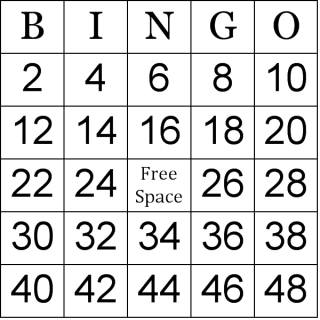Cognition
Some Odd Numbers are Odder Than Others
Human beings are not great at using purely rule-based categories.
Posted October 29, 2013

The ability to classify objects is crucial to thinking. When you place an object into a category, you are able to predict things about it. When you see a small furry four-legged animal in someone’s back yard, and you categorize it as a dog, then you can predict that it will probably bark and might want to chase a ball or gnaw on a stick. In this way, your categories allow you to use your past knowledge to help you understand new situations.
Often, an object is placed into a category because it is similar to other members of the same category. So, you decide that the furry four-legged animal is a dog, because it looks like other dogs you have seen in the past. You categorize the tall, woody plants in the yard near the dog as trees, because they are similar to other trees you have seen.
Sometimes, of course, an object belongs in a category because the category has a strict definition that determines who is and who is not a part of it. In math, an odd number is any number whose final digit is not divisible by 2. A triangle is any three-sided closed figure.
An interesting observation over the years is that even when people are faced with categories that have strict definitions, they treat them in a similar way to categories whose membership seems more based on similarity. In 1983, Sharon Armstrong, Lila Gleitman, and Henry Gleitman found that people believed that some members of categories like even and odd numbers are better than others. So, a number like 400 is judged to be a better example of an even number than a number like 798, even though—technically speaking—both are perfectly good even numbers.
A 2013 paper in the journal Cognition by Gary Lupyan looked at this effect more carefully. In one study, he gave people one second to classify numbers as odd or even. The numbers had between 1 and 4 digits. He manipulated how many of the other digits in the number were of the same parity as the judgment to be made or of opposite parity. That is, if a four-digit number to be classified was even (because its right-most digit was even), then on some trials all of the other digits were even, on some trials one, two, or three of the other digits were odd.
Unsurprisingly, people were highly accurate at this task. However, the more of the digits of a number that were the opposite parity to the judgment to be made, the slower and less accurate people got. In another study, participants were shown numbers and given as much time as they wanted to make judgments, and they made more errors when the numbers had some digits that were opposite to the parity of the correct response. This effect was also observed when the numbers were spelled out (Three hundred and fifty two) rather than written as Arabic numerals (352).
Other studies in this paper found a similar effect for triangles. People got slower and less accurate to classify triangles as they differed more from a typical equilateral triangle. A third set of studies demonstrated a similar effect for grandmothers. A woman is a grandmother if her offspring has a child of his or her own. Yet, the typical grandmother is also older and retired. The less that particular women resembled a typical grandmother (despite being grandmothers), the less chance that participants judged they had to win a contest in which every grandmother entered had an equal chance to win.
What does all of this mean?
The human mind is ill-suited to carry out rules. We need to be able to recognize new items quickly and to figure out what they are likely to do in order to understand how to interact with them.
It is rare in nature that there is a specific rule that defines a category that does not come along with lots of other features that help to identify the item. A dog may be an animal that has dog DNA, but dogs also have lots of characteristic features that help us to understand what they are. (Trees are another matter entirely, though, many things we classify as trees are less related to each other than they are to other plants that we could consider bushes or flowers.)
So, the human mind evolved to focus on classifying items based on their observable properties. Humans have invented lots of rule-based categories like even numbers, triangles, and even bachelors and grandmothers. But, we do not have mechanisms that allow us to simply use rules.
You might think that is a problem. It would be great to adapt to rule-based categories so that we would not make mistakes classifying them.
However, even many categories that seem rule-based are not. Consider what seems to be a simple concept like murder. It should seem obvious that killing another person is a crime. But, what about someone who kills another person in self-defense? How about an elderly man assisting the suicide of his long-suffering wife to spare her additional years of pain? It is hard to determine whether these examples are actually murder. Our ability to use other factors besides rules to classify items allows us to figure out how rule-based categories apply in the real world.
Follow me on Twitter.
And on Facebook and on Google+.
Check out my books Smart Thinking and Habits of Leadership
And coming in January, 2014, Smart Change.
Listen to my new radio show on KUT radio in Austin Two Guys on Your Head.




